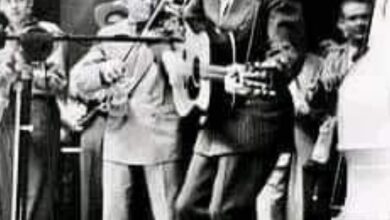Procol Harum’s “A Whiter Shade of Pale,” released in 1967, is celebrated as one of the most iconic songs of the 1960s, characterized by its mysterious lyrics and unique Baroque-inspired sound. Written by Gary Brooker and lyricist Keith Reid, the song quickly gained immense popularity, topping the UK charts for six weeks and reaching No. 5 in the US. Its haunting organ melody, reminiscent of Johann Sebastian Bach, combined with Reid’s complex, poetic lyrics, solidified its place in music history as a defining track of the “Summer of Love.” The song’s abstract narrative and allusions to classic literature, including references to Chaucer and Shakespeare, have invited a multitude of interpretations over the years, with listeners exploring themes of love, loss, and existential reflection.
The creation of “A Whiter Shade of Pale” was somewhat serendipitous. Gary Brooker had a musical idea that was inspired by classical music and, upon discovering Keith Reid’s evocative lyrics, they began to form a unique collaboration. The addition of Matthew Fisher’s distinctive organ work gave the track its haunting quality, enhancing the overall mood and contributing to its lasting appeal. This combination of lyrical depth and musical innovation set the song apart from others of its time, creating a sound that was both timeless and distinctly modern.
Despite its initial success, Procol Harum encountered legal challenges decades later regarding songwriting credits. A dispute arose when the band faced claims about the authorship of “A Whiter Shade of Pale,” leading to a significant legal battle that highlighted the complexities of song ownership in the music industry. Nevertheless, the song’s legacy remained unscathed, continuing to influence generations of musicians, including notable figures like Paul McCartney and Brian Wilson. Its melodic richness and thematic depth have ensured its place in the pantheon of classic rock.
The formation of Procol Harum in 1967 marked a turning point in the music scene, as the band sought to fuse American R&B influences with classical music elements. Their innovative sound resonated with a generation looking for something fresh and evocative. Early performances, including a memorable show where Jimi Hendrix famously joined them on stage, contributed to their growing reputation as a pioneering band. The spontaneity of such collaborations captured the essence of the era’s musical experimentation.
“A Whiter Shade of Pale” is often cited as a standout track in Procol Harum’s discography, and its impact has extended well beyond the charts. The song has been covered by various artists, including Annie Lennox and the band Fish, demonstrating its broad appeal and adaptability across different musical styles. Its inclusion in numerous films and television shows has further solidified its cultural significance, allowing new audiences to discover its beauty and complexity.
Beyond this iconic track, Procol Harum continued to innovate and shape the progressive rock genre with their unique blend of classical and rock influences. Albums like Shine On Brightly and A Salty Dog showcased their continued evolution as artists, exploring themes of war, love, and nature through intricate arrangements and lyrical storytelling. Their willingness to experiment with musical forms paved the way for future bands within the genre, inspiring a legacy that endures to this day.
The band’s use of classical elements in rock music was groundbreaking, and Procol Harum played a significant role in the rise of progressive rock in the late 1960s and early 1970s. This genre often involved complex compositions and thematic depth, characteristics that Procol Harum mastered early on. Their approach set a precedent for other bands seeking to explore the integration of orchestral sounds with rock music, influencing artists such as Yes, Genesis, and ELP (Emerson, Lake & Palmer).
Cultural interpretations of “A Whiter Shade of Pale” continue to thrive, with the song often analyzed for its philosophical underpinnings. The ambiguity in Reid’s lyrics invites listeners to project their own experiences onto the narrative, leading to diverse readings that range from romantic disillusionment to existential musings. This fluidity of interpretation contributes to the song’s timeless quality, ensuring its relevance in contemporary discussions of music and art.
As the decades have progressed, Procol Harum has maintained a dedicated fan base, and their music continues to resonate with new listeners. The band’s ability to transcend generational boundaries speaks to the universal themes present in their work. “A Whiter Shade of Pale” remains a staple of classic rock radio and is frequently included in playlists celebrating the era’s most significant songs.
In conclusion, “A Whiter Shade of Pale” stands as a testament to Procol Harum’s artistry and innovative spirit. The song captures the complexities of human emotion and the power of music to evoke deep reflection. As Procol Harum continues to inspire musicians and fans alike, their legacy remains an essential part of rock history, with “A Whiter Shade of Pale” at its forefront as a timeless masterpiece that will endure for generations to come.





